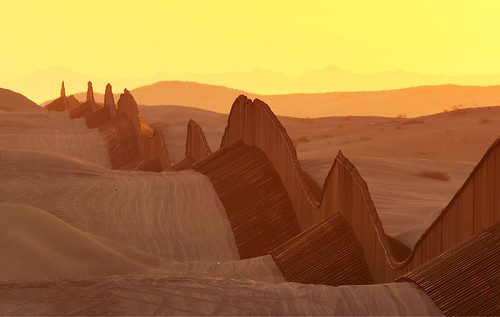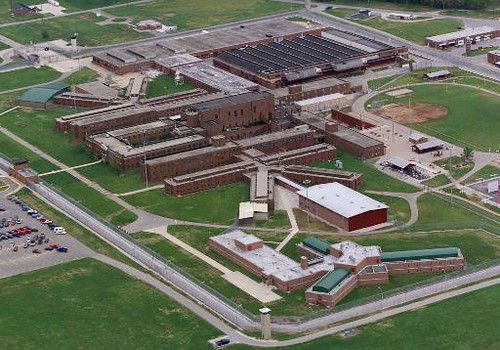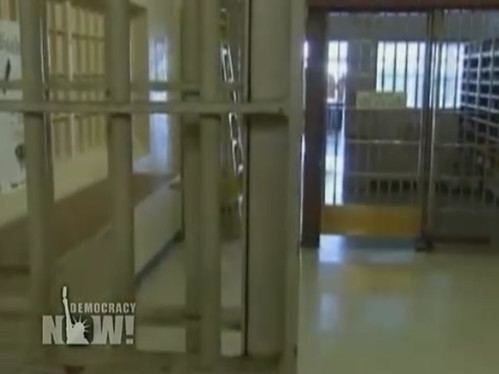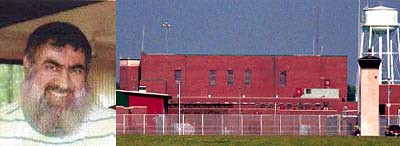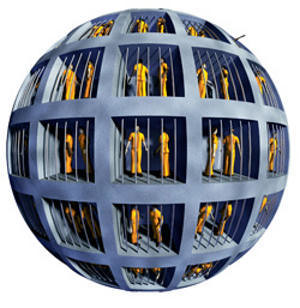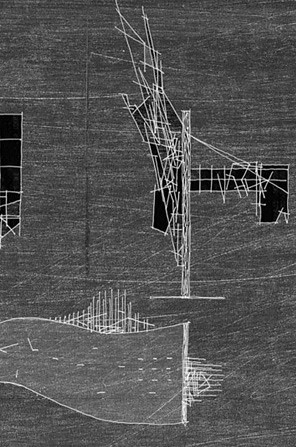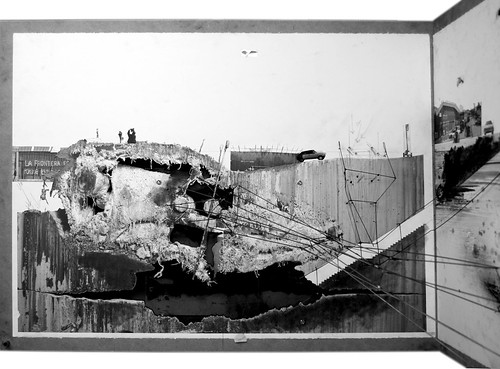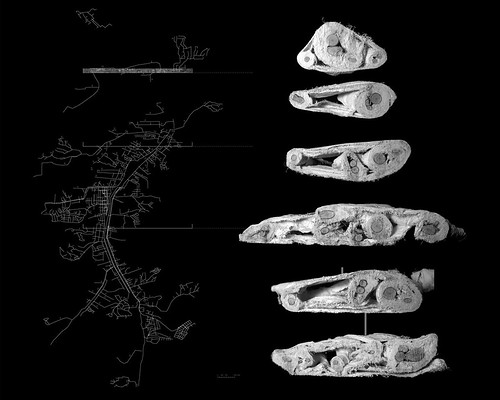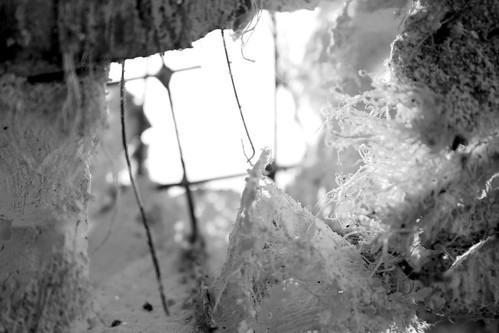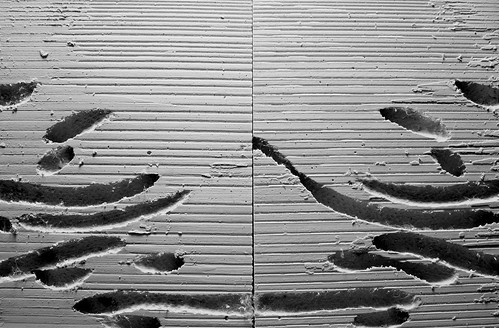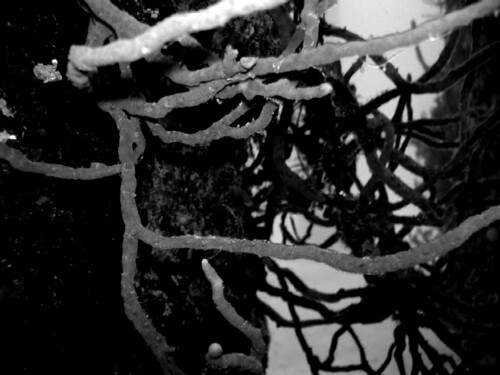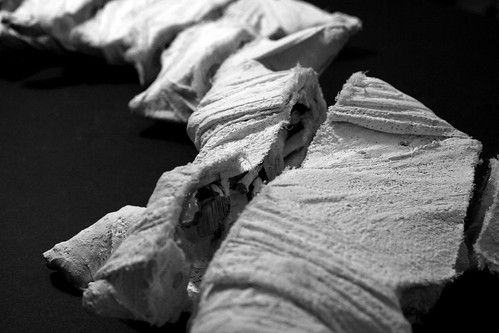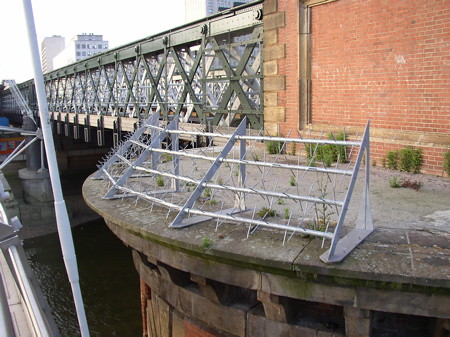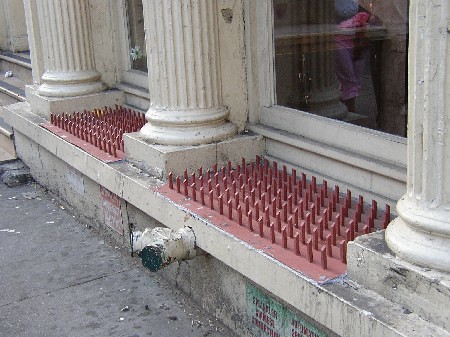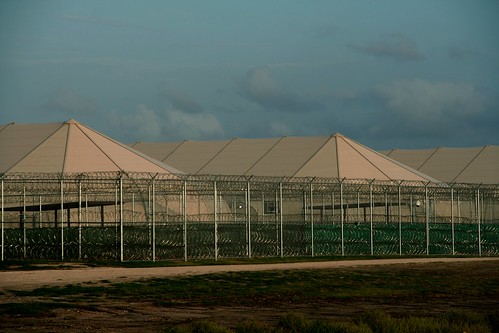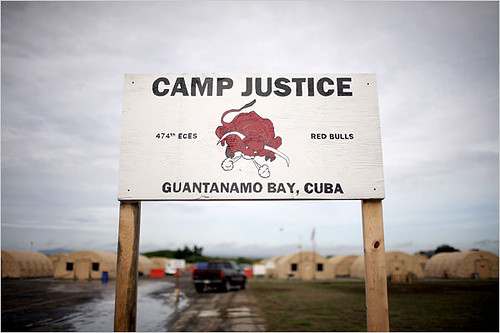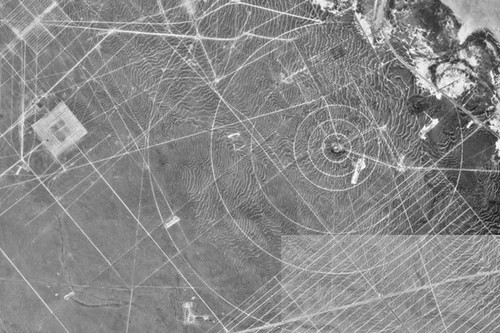On Archiving the Architectural Signatures of Torture
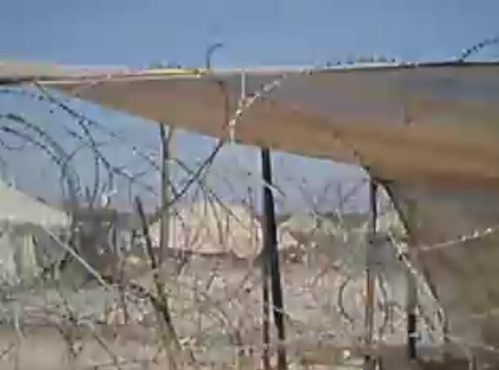
[Image: Inside the Secret Cellblocks of Abu Ghraib, A soldier-narrated tour of the detainee camp during its final days. (MoJo Video).]
"Finally, one of our senior NCOs went completely over the top and, in an honest moment, broke some of the tension by making fun of himself and those who called us heroes. As he led us on a ruck march, he shouted, "You are the lions of the desert! You are the scorpions of Iraq!" (Tony Lagouranis, from his book Fear Up Harsh: An Army Interrogator's Dark Journey Through Iraq.)
After watching these two videos taken by a US Army soldier on a stroll through the detention camps of Abu Ghraib “during its final days in 2006,” Mother Jones reports, “after the prisoners left but before it was torn down, and evidence of the camp was buried and burned,” it seems all the more urgent to think about how we can – or maybe more importantly – how we should archive the war on terror’s insidious brand of torture space. Were it not for critical artifact vaults unearthed from the past and handfuls of groundbreaking historic research, early evidence – and indeed our understandings – of torture might have been lost long ago.
If not for important web projects, maps, video libraries, traveling torture device exhibitions, novels, memoirs, survivor story based films, billboard art, gallery shows, installations, declassified government files, secret CIA file stashes, a few international trials, some scattered museums and off the beaten track site preservations around the globe (hell, one day they might even say if it weren’t for these Lego Toys, or this architecture studio whose assignment was to design a torture device!) the pale histories and butchered geographies of torture’s secret autobiography might have dissolved in a dark sea of popcultural obscurity inscrutably lost to the amnesiacal tendencies of our collective imagination.
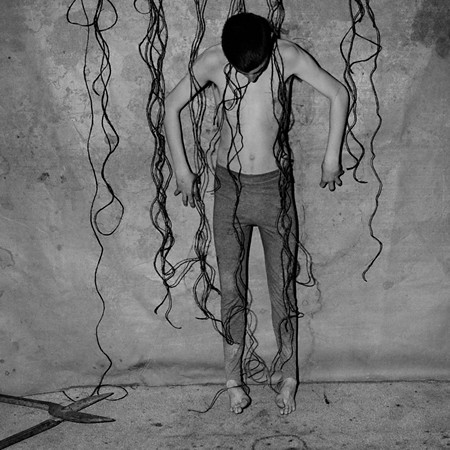
[Image: Cut Loose. Roger Ballen, 2005, Via Prison Photography.]
I am reminded of a quote from Pete Brook, who runs the ever-increasingly amazingly archival blog Prison Photography, when commenting on the below radar work of photographer Roger Bellen (who has been producing images that are as stark and harrowing as the images of Abu Ghraib themselves since the 70's) and why the media pays him minimal attention:
"It seems the comparison is so glaring no-one has wanted to state it! Is it with guilt we accept Ballen’s work into an art aesthetic, and then stand with repulsed incertitude before the Abu Ghraib images? Much has been made of Ballen’s hypnotic work and his vortex of image and dis-logic. I wouldn’t suggest he is a mystic seer, but if some sort of visual, global Zeitgeist exists, I would suggest that Ballen tapped it. Few commentators have readily acknowledged this visual convergence. Why? Strange forces.
We have argued the ethics and presence of torture in non-photographic media, but have we failed to satisfactorily take up issues surrounding the aesthetics of torture in photography?"
Salient questions. Makes me wonder how much we digest torture through the art world, through media, through pulpified pornographications of B films and bad TV, politics, media, advertising, so much that we never taste the vile repulsion of torture's reality when faced with it? We might still gag, but not long enough to stop us from taking another bite. Perhaps we need to realize a Ballardian Attrocity Exhibition, a stark neutered world people can see firsthand and visit to wake them to the pathological and fictional defects rooted as failed promises in our normal landscape.
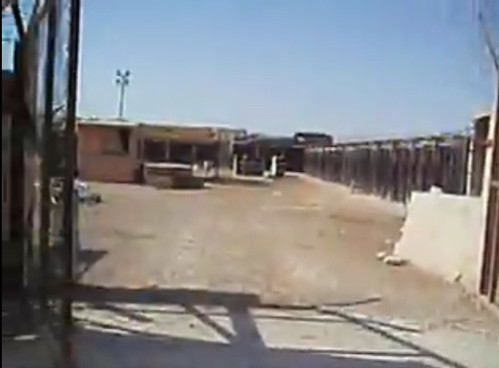
Though Obama released several incriminating memos on torture before brazenly telling us to just look away and see past them (past the blueprints of legalized torture!...just walk on by, he says - walk on by!), as empty as his act may prove in the end we at least have those documents now to refer to in the future. Like witness accounts and standby films, we have the ability to comb through them again and again for missed details, for future precedents and litigations.
And while we can still literally touch and grip ancient torture tools in our hands today, and even remake modern devices of electrocution, waterboarding, or assemble the audio speaker set-ups of musical torture for that matter if we need to for demonstration purposes, unless the sites themselves are stored in some way we cannot go back and situate torture outside the limited references afforded by lucky photos, miraculous videos, happen stance audio recordings, first hand accounts, hearsay, and other documents that can only offer a somewhat flat and framed perspective of the torture arena.

But torture isn’t only the action of torture, or a moment in time when torture happened, it is a space hatched from a very specific set of spatial circumstances and geographic contexts wherein less obvious narratives of torture reside in landscape, where horrible eternal memories are permanently spatialized within the fragile confines of a victim's psyche, where coded behavior of torturers themselves greases cogs of runaway power, where rampant scars in the law can be measured more closely.
That is to say, I suspect torture spaces (like all spaces do) resonate with their own meanings about the nature of torture, and help to reveal the spacio-political configurations that contain torture, reflecting extra-legal logics and political constructs of law that can be devised to shelter torture. Torture inside a vacuum (while still torture) may not be as damaging as torture in a tangibly real and memorabe place.
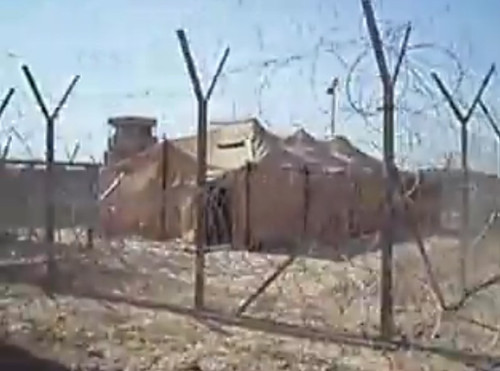
I’m obviously no historian or political scientist, but it appears the more we have tried to legally protect against torture the more we have enabled the law to be tortured itself, twisted to the point of legally bending to justify torture. Can we then use the sites of torture to deconstruct this process of how law becomes a form of detainee and made victim of torture itself, since the law is what is used to architect torture for the broken information gathering industry the war on terror requires? If torture space is the product of the politics of torture, how can this space be examined in order to dislodge these politics from our legal landscape?
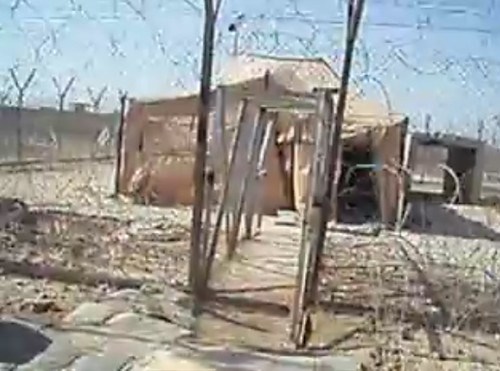
Talk to a forensics expert and they’ll tell you there is an element to which the space itself is complicit with crime, to shield and cover acts of torture. In some cases, social theorists will blame spaces for crime. Crimes take place in designated spaces for various reasons, some far more obvious than others. Talk to a pyschotherapist and they’ll tell you how torture carves deep-wounded spaces of trauma in the victim’s mind so that specific characteristics of another physical space altogether can trigger traumatic memories in the survivor and thereby induce more trauma – the legacy of torture space never quits, you see.
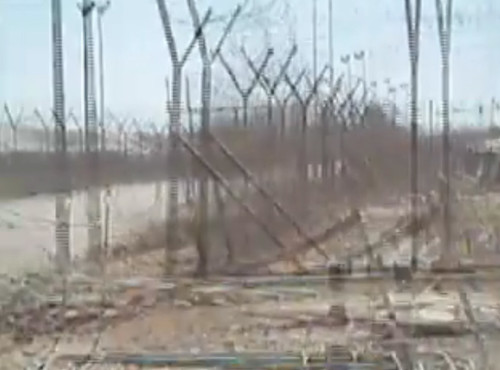
As a spatial phenomenon I’m curious (and this might be a great question for David Gissen who presented at Postopolis! on ways of practicing architectural history and archive), how do we even go about considering the preservation strategies for something like torture space? What else is secretly stored within these nascent containers, and how could we encapsulate it?
At one point, Gissen was talking about preserving pollution as a possible future urban archive, or storing giant swaths of sky that would house the atmospheres of cities in their environmental states dozens or even hundreds of years ago. I mean, what if anything can the desert dust tell us about the American chapter on torture in Iraq? What about all of the debris, the discarded material that once stabilized the camp before it was taken down, what might we learn about the infrastructure of torture in those remains? Anyway, I've asked these same sorts of questions already in a previous post on the CMUs in Indiana and Illinois.
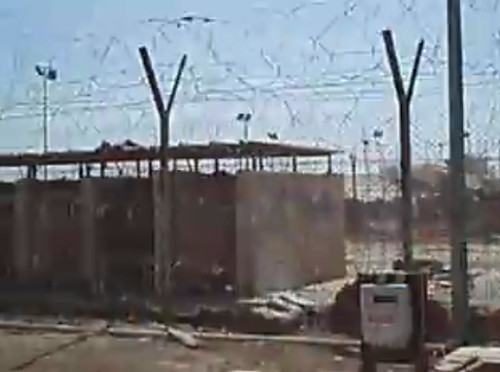
Torture is one of the grimmest and most unconscionable legacies of humankind, we could say it’s given real estate to some of the worst and most secretly kept crime scenes ever. Shouldn’t we then treat it as such and seek to create a spatial archive of torture for reference and as a model to further study the spatial ramifications of torture, the political encoding, the cubic effects of torture space on victims and the neighborhoods where torture is presumed to be taking place?
There is a relationship between space and torture which just seems so largely unexplored to me (as fearful as the prospect may be to look any further); like much of what we probably still don’t know about space phenomenon and spatial cognition as those subjects can be observed neuro-scientifically, we have probably only scratched the surface of bringing the architectural relevance of torture to bare on our legacy as a species.
Yet, in light of what I said about the law being the ultimate victim, should we avoid research into the psychological dimensions of torture space because that data will only be used to corroborate new legal mechanisms for future torture justification which seems to be the pattern? Of course not, I don’t think we can ever surrender to that notion. We should strive to learn, define and protect against torture as much as we can, all the more now, and then fight for protections in the law afterwards.
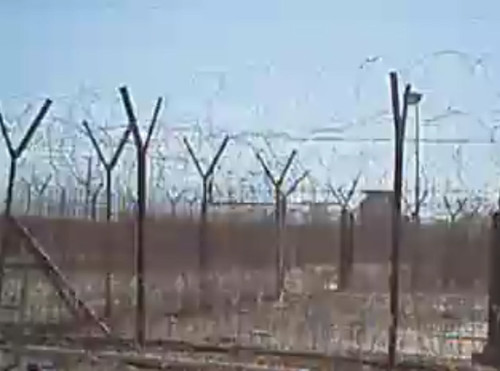
A more generic question could be: how might the sphere of architecture be used to help the international community continue to make light of torture and educate, not just for people today but more critically for those future generations who will wrestle with the tragedy of new torture and the cultural legacy of today’s? I know there are great efforts out there afoot to document the political, psychological and historic spectrums of it, but what is architecture's contribution towards this aim of capturing and scrutinizing torture itself.
In other words, could we use architecture in some manner to interrogate torture space itself, to put torture itself on trial, not only to raise awareness but as an under-explored means for identifying and cataloging further evidence of abuse, uncovering new research as it has been inscribed in torture space, etc.? Would building a perfect replica of Guantanamo Bay on an manmade island in the SF Bay next to Alcatraz that could be toured help the American public in any way to think about the importance of pressuring our politicians to prosecute the architects of torture? If the presence of Alcatraz is any indication of how we respond culturally to the penal system's politics I fear this would do nothing. Would locating a bunch of these cells or these chambers around cities across America convince Obama that we cannot escape this dark chapter by merely turning our heads and looking forward?
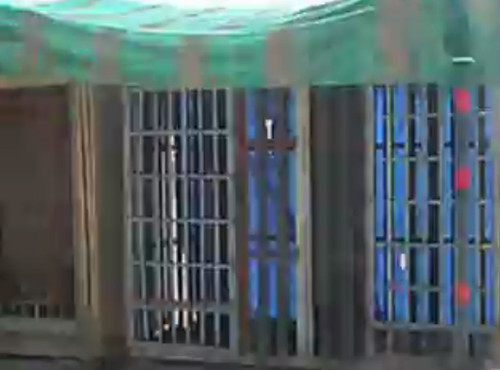
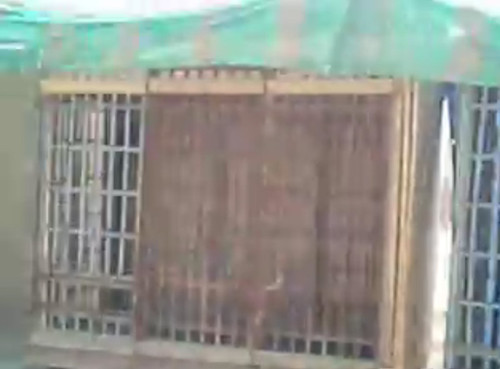

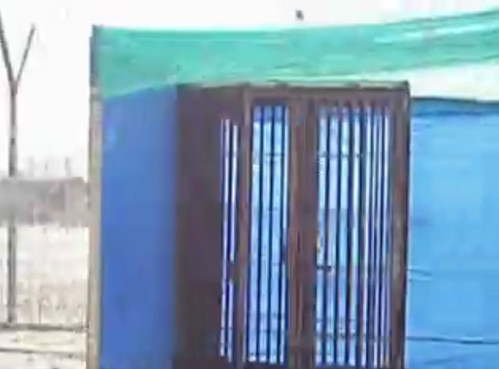
For all we know, this one soldier’s five minute drive-by of what Mother Jones refers to as the “secret cells of Abu Ghraib” may be all the known evidence there is left of “the outdoor segregation cells where detainees were kept and deprived of sleep—even years after the Bush administration said the camp had been cleaned of any abusive practices.” I can’t help but to think any site that ever comes to the surface should automatically be modeled somehow as accurately as possible and treated as a forensic mystery, and stored in the archives of torture space. What else could a trained eye observe in these videos that the general public would never be able to identify? What might those same trained eyes be able to see through other forms of spatial analysis; certain smells, temperatures inside segregation cells, the abuse of being in certain locations where one could only hear other victims being victimized (could acoustics in the right conditions lead to torture?), informal proximities to stimuli (dogs, insects, devices, special units), and so forth.
Who knows, maybe the desert scorpions of Iraq bore more witness to torture than anyone else, as many even participated in torture themsleves, but what if they actually constituted the largest single source of Abu Ghraib’s torture archive? Scorpions.

Interesting enough, the Scorpions of Iraq were, according to Wikipedia, a "paramilitary force of Iraqis, set up by the United States Central Intelligence Agency prior to the 2003 invasion of Iraq," whose original mission "was to foment rebellion in Iraq prior to the US led invasion," but for various logistical reasons "became involved in the interrogation of US held prisoners" and were "implicated in the events that led to the death of Iraqi Maj. Gen. Abed Hamed Mowhoush while in US captivity. These events included the use of physical and psychological torture under the auspices of a US CIA operative identified only as "Brian"."

[Image: Guantanamo Bay: 6th Anniversary, Legofesto.]
Mother Jones also writes, “the abuse outside interrogation rooms was another cog in the torture machine. The thousands of detainees living in the sprawling tents were kept in squalid conditions, exposed to the elements and mortar fire.” Often we are so fixed on the more obvious extremities of torture that we can be blinded to what may be happening closer to plain view.
When we learn that detention camps in torturous conditions were dismantled and evidence of them burned into oblivion, the question becomes: how can we gather archival materials from these sites prior to their disappearance, what could constitute archival materials in a scenario where the site itself is unknown? Or, how then might we gain evidence of torture by what is left behind in its footprint once the site is discovered - any architects have ideas for how to fingerprint a ghost?
I am not sure. More on this in the future.

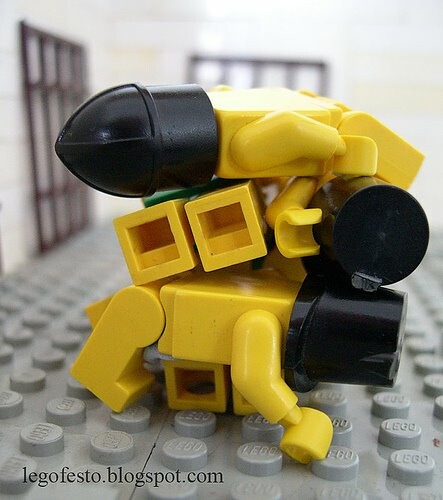
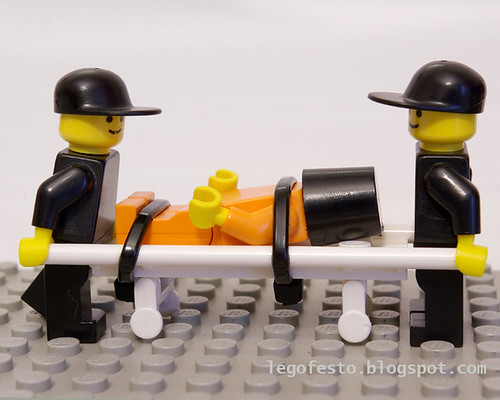
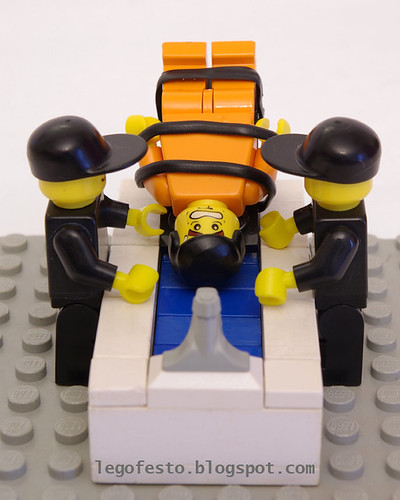
[Image: All images, via Legofesto.]
I always thought projects like Zone Interdite who did the virtual Guantanamo Bay project was onto something with their walkthrough of the inmate camps, and maybe video games will become incredible new investigative science tools in the future if they're not already a part of the practice. But, shouldn’t virtual models of Abu Ghraib and Bagram be constructed to, if just to preserve the basic dimensions for now? For that matter, what if something should happen to the torture chambers of the Killing Fields in Cambodia, or the basement that Australian nut job kept his daughter in a dungeon for 24 years? What about the SHU at Pelican Bay, for that matter?
Shouldn’t we have accurate 3D models of those spaces constructed so to never lose sight of them, their architectural signatures, the unknown spatial significances we may one day derive from these models (if even purely theoretical for now), and to keep them in tact as much as we can reproduce them to at least beckon future research into areas like the psycho-spatial effects of torture space, or to help observe the systematic behaviors of the interrogators and how they constructed, ordered, operated these sites; to unravel how and why these sites were built in the first place?
It's as basic as a Discovery Channel show, I suppose, but could we redraw the logistics of the torture machine and deduce some of the ways politics and cultures of secrecy are fed into it and how the military hijacks space as a system for gathering information? I don't know, maybe models have much less to offer, and I am romanticizing this notion. Then, we rebuild these sites entirely in the Earth!, in Hollywood sets, and study them in person.
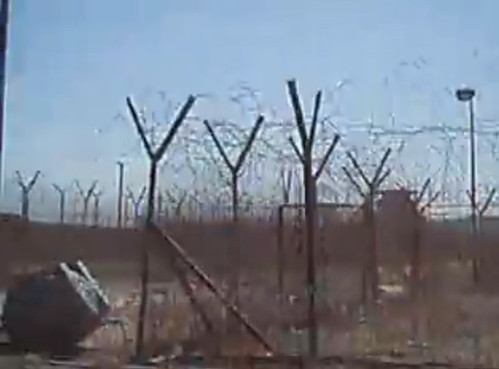
When you hear scientists coming out today to state how their research had been totally co-opted and misused by the Pentagon in the newly released torture memos that were crafted to justify torture, shouldn’t we think there is still a lot more work to be done to learn about and more clearly define what actually constitutes torture since such lengths have been gone to in order to take that research and twist it to claim what torture is not?
That is to say, if there is a war on the very definitions of torture right now then shouldn’t we be racing to research everything we can about torture and its effects, not so it can be misused by the Pentagon or some other power in the future, but in order to stake more scientific and legal claim of our own over the right to decide what is incontrovertibly understood as inhumane cruel punishment and acts of human abuse? Since torture exists in space, could we archive these spaces as a means for clarifying torture in some way?

I may be way off about an examination of torture space providing new incriminating evidence here or helping to further articulate a spectrum of torture, but I think at the very least a spatial examination of torture would be worthwhile for several political, psychological, geographic and architectural reasons, least of which will help put the realities of torture into context for the general public who still has very little connection to it beyond shocking imagery and overwrought political jargon.
Perhaps a new knowledge gained could help churn up something we did not know about torture before, or even about architecture itself. Perhaps people need to identify with it in a much more tangible realm in order to understand the tragedies we are about to let pass unavenged.

What if one day a student working on his architecture masters thesis develops a new language for interpreting certain aspects of architecture for which we have concluded (or more or less just taken for granted the last several hundred years) as being harmless and innocuous, and manages to show actually how particular tropes in architecture mimic similar corrosive effects observed in relation to specific sites of torture? It could be similar to coming to terms with our foul environmental habits of the last several decades as a gluttonous and irresponsible consumer culture.
Could certain architectural nuances, like the resound of a specific sound, the routine movements of shadows within a given space, or over exposure to a series of angles (or a lack of angles) produce a kind of geometry of psychosis? Or, as my friend Chris Nelson might ask, is there a counter science to the values so cherished in Feng Shui that we should be mindful of delivering harm through subtle forms of space? What if, as the student shows, it turns out we are actually subjecting ourselves to an insidious form of subtle torture all the time as a part of existing in the daily spaces of our normal lives, and that our typical configurations and architectural qualities are utterly pathogenically confused and downright masochistic!; at the very least, what if he makes a brilliant case for how many urban features of our modern era are producing the same effects of torture?
Who knows where it would lead (maybe nowhere!), but the more torture's evidence faces being destroyed by the regimes of torture, I am all the more inclined to believe that there must be ways of preserving this evidence first by finding ways of hacking torture space and taking samples, or recreating torture space after the fact and scouring it for new observations; or breaking torture space down into a lexiconic alphabet of spacio-political configurations that we could use to disentangle the legality of torture from the law, etc.
[All Images grafted from Inside the Secret Cellblocks of Abu Ghraib, A soldier-narrated tour of the detainee camp during its final days. (MoJo Video) unless otherwise noted.]

